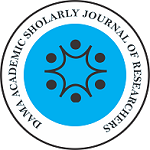Authors: 1Rachmah Indawati, 2Kuntoro, 3Hari Basuki Notobroto, & 4M. Bagus Qomaruddin
1Doktoral Student, 2, 3,4Lecturer at Public Health School of Airlangga University, Surabaya, Indonesia. Kampus C Fakultas Kesehatan Masyarakat Universitas Airlangga, Jl. Mulyorejo Surabaya 60115, e-mail: Email: rachmah.indawati@gmail.com
Abstract
Population dynamic changes in East Java has marked the fifth stage of the demographic transition. To understand it is necessary to look at the health transition. The objective is to identify the structure of the population and the health condition. This study was a ‘secondary analysis of data’. Source of data derived from various sources journal. The proportion of elderly who have health complaints is more than 50%. The percentage of women larger than the males in all age groups. Proportion of 65+ is more than 7%. Good improvement in life expectancy can threaten health and the emergence of infectious diseases, degenerative diseases. East Java is in the second phase and has moved into the third phase of such a stroke in 2007 was 7.7% and in 2013 increased to 16%. In 2007, hypertension was 7.5% and in 2013 increased to 10.8%. High rates of infectious diseases HIV/AIDS. It can be interpreted as a failure on the second phase of the epidemiologic transition. Although the mortality rate of HIV/AIDS is very high and the results projected life expectancy continues to increase. Conclusion, need new thinking to meet the needs of public health, especially in the older age group.
Key Words: Demographic transition, health conditions, elderly, East Java province

